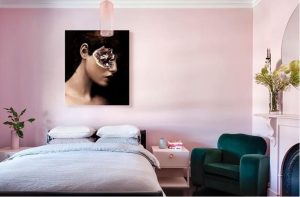Or perhaps you dread that moment when renovations inevitably enter the conversation at a dinner party. Suddenly, it’s as if a divine spirit has entered the room and the guests have all started speaking in tongues.
With the help of Miriam Fanning, the brains behind Melbourne’s award-winning Mim Design Studio, we’ve defined a range of the most common interior design terms, so you too can sound like a know-it-all at dinner parties.
 Modern design is not modern at all. Instead, it refers to the period between the 1920s and 1950s. Photo: Sharyn Cairns for Mim Design Studio
Modern design is not modern at all. Instead, it refers to the period between the 1920s and 1950s. Photo: Sharyn Cairns for Mim Design Studio
“Many people get antique and vintage confused but they’re actually very different,” Fanning says. She describes antique as anything over 100 years old that is aesthetically or historically valued. Vintage can be between 20 and 100 years old and should reflect a particular period. Retro, also a term confused with the above, actually means to repurpose a distinctive style from the past, whatever the era.
Another confusing example is the style people refer to as “modern”, which is not modern at all. It refers to the period between the 1920s and 1950s. Influenced by Scandinavian style – pale colours, simplistic, functional (think Ikea) – and Bauhaus – urban, using 20th-century technology for practical purposes (think the Alessi kettle) – modern is the antithesis to its heavily textured antecedents.
“We rarely imported furniture back then, so our colours were more Australian. For example, yellow wattle,” says Fanning. “A distinct feature of the era was authentic exposed materials reflecting the landscape.”
In the 1970s through to the 1990s, postmodernism was a (some might say aggressive) rebellion against minimalist modernism through the use of bold primary colours. The result was an intense style that made it seem as if the only colour palette designers could get their hands on at the time was a Rubik’s Cube. “There was often a hidden meaning with postmodernism,” says Fanning. “Things were more whimsical because it brought that metaphoric philosophy into play.”
Contemporary style is by its literal definition modern. It uses styles from the past and adds a current twist. For instance, a modern design might use such natural materials as wood, stone and teak, whereas contemporary designers might then add contrasting materials such as glass, metal and concrete.

Industrial chic – 19th-century warehouse style, exposed metals, concrete flooring, red brick – is currently experiencing a resurgence, which makes it more contemporary than modern. Note: If you’ve ever wondered what designers mean when they describe something as masculine, industrial chic is the interior design equivalent of chugging a beer, smashing the can on your head and burping.
A few more words to throw around at your next social gathering:
- Transitional: The cohesive merging of traditional with modern design.
- Neoclassical decor: Draws on archetypal Greek and Roman art. Features include large detailed vases, marble statues and ornate chandeliers.
- Maverick: Modern with an unconventional spin.
- A salon-style hang: Not a hip dance move where you mimic the Fonz combing his hair. It’s the recently resurged 17th-century trend where one wall is adorned with a cluster of (curated or ad hoc) frames.
- Hue: Just know-it-all for colour.
- Moody: The use of dark layers and deep textures (not to be mistaken with when someone refuses to tell you what’s wrong, because you’d know what was wrong if you ever paid any attention, Jack).
- Well-appointed pieces: Of a high quality.
There you have it, folks. You may not be a design doyen just yet, but rest assured you’re now as conversant in interior design as your fellow dinner party know-it-alls. And, if all else fails, just start talking in tongues and everyone will assume you’re some sort of inscrutable genius.
article from domain.com.au
